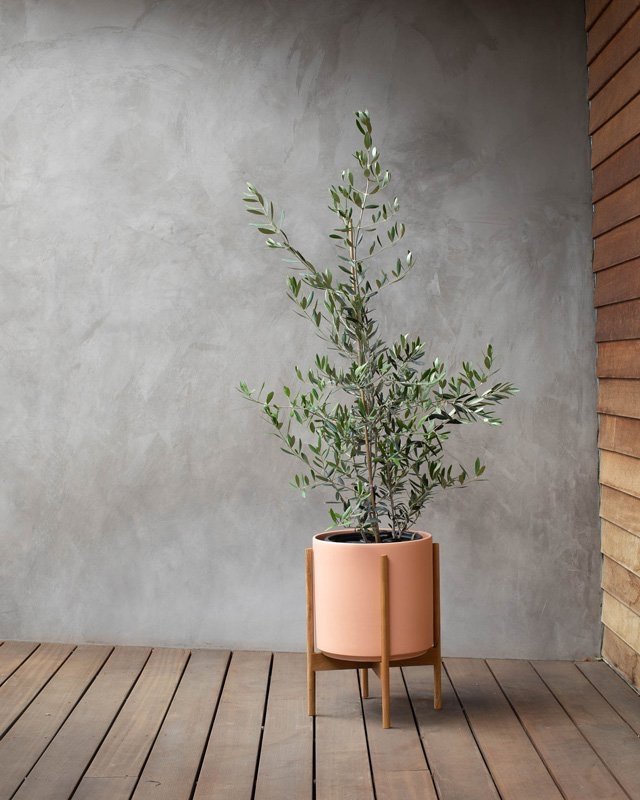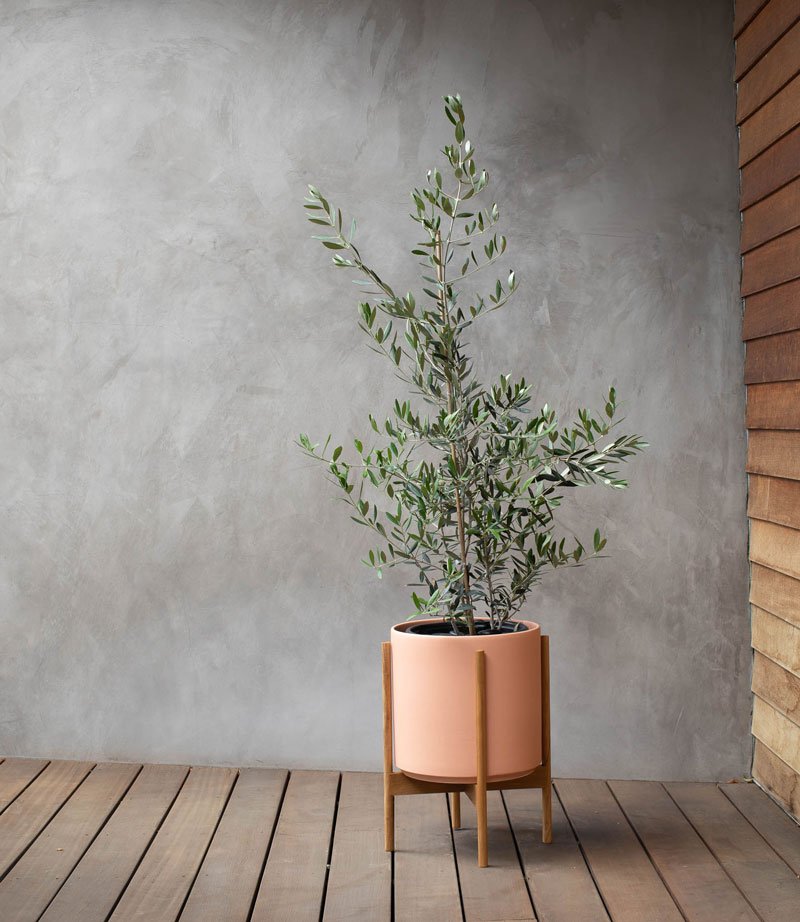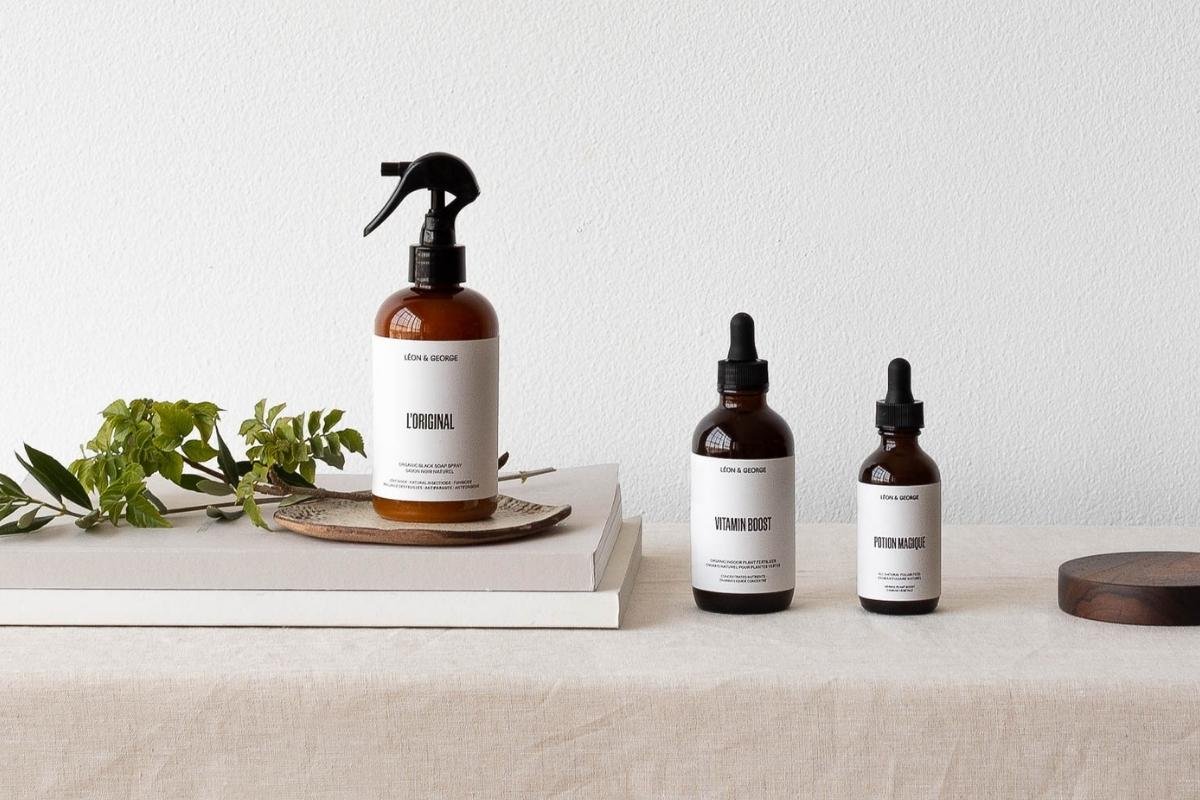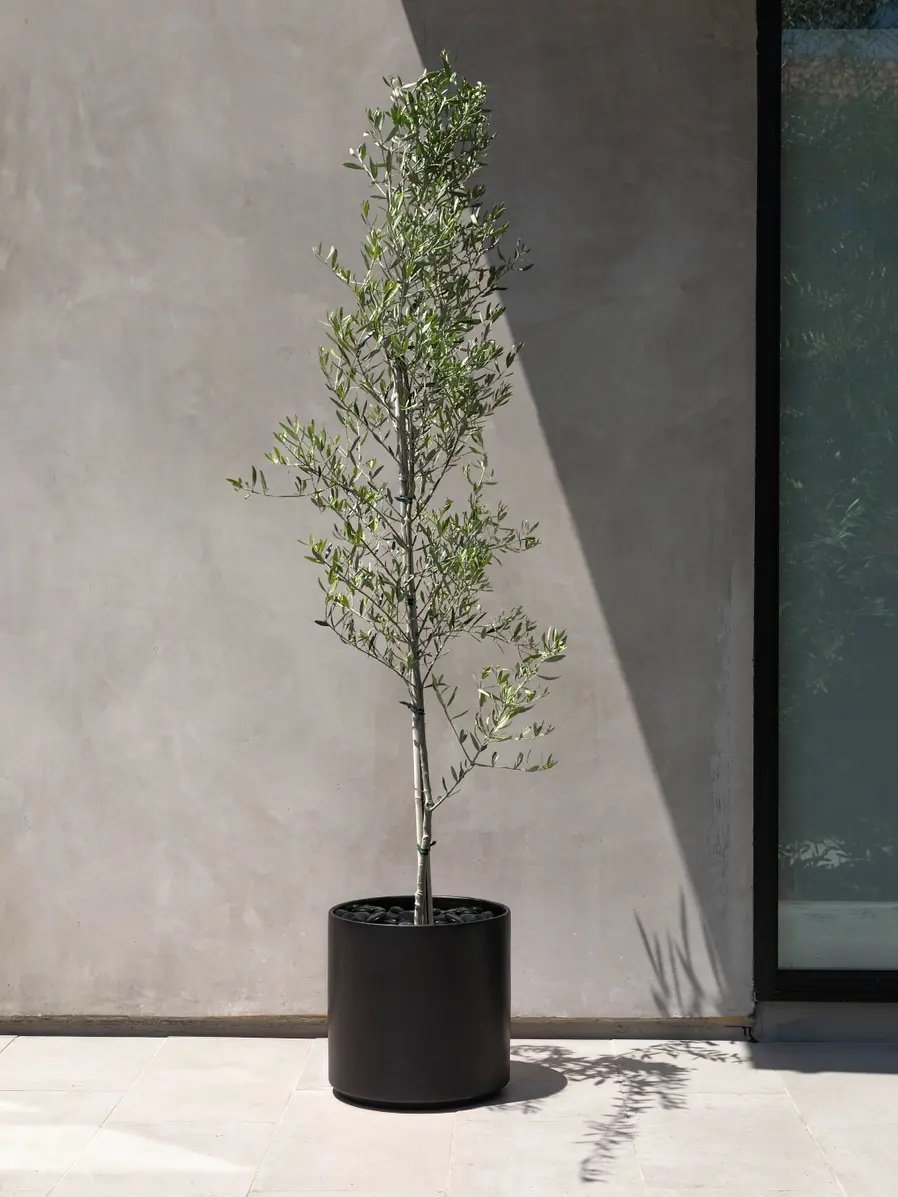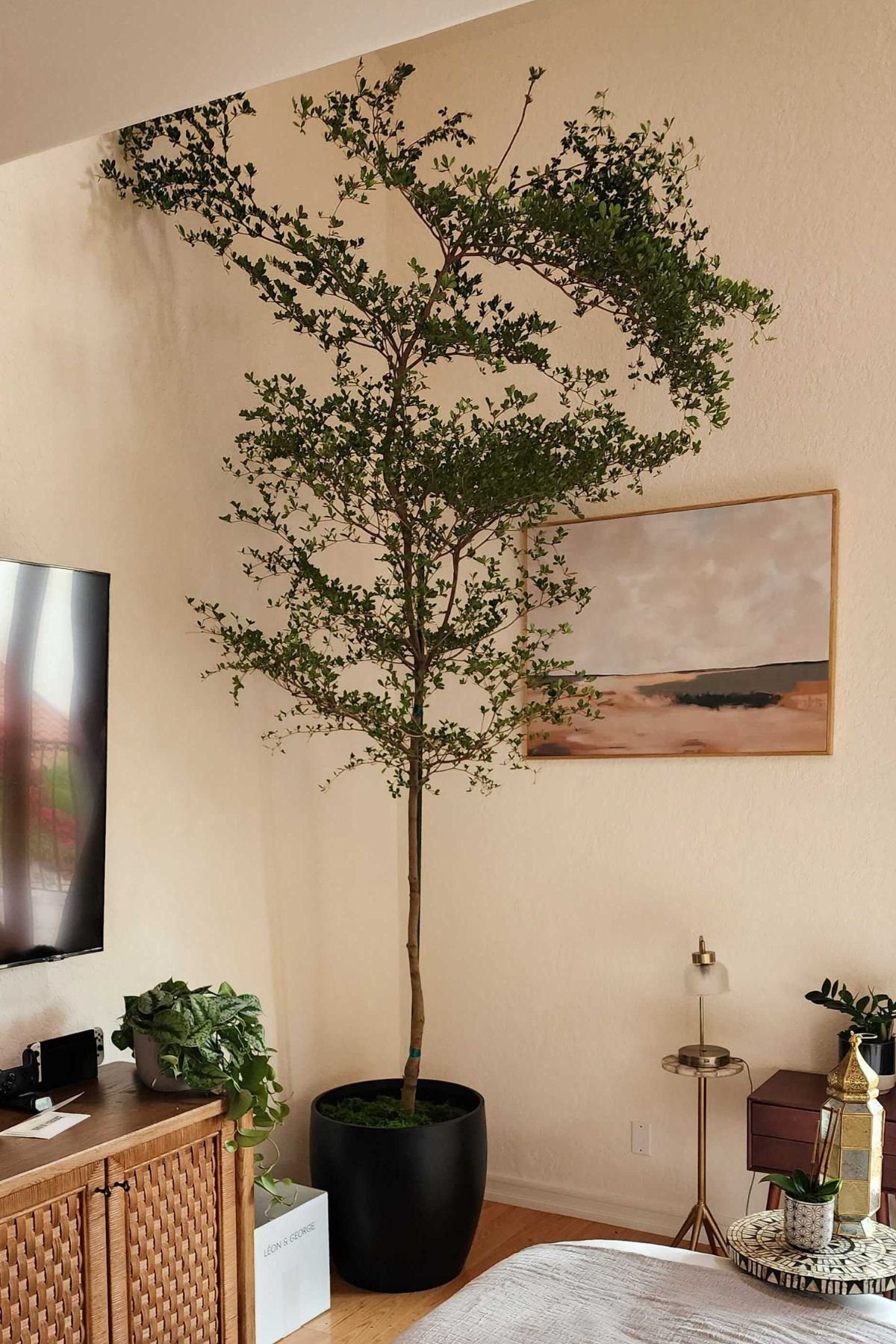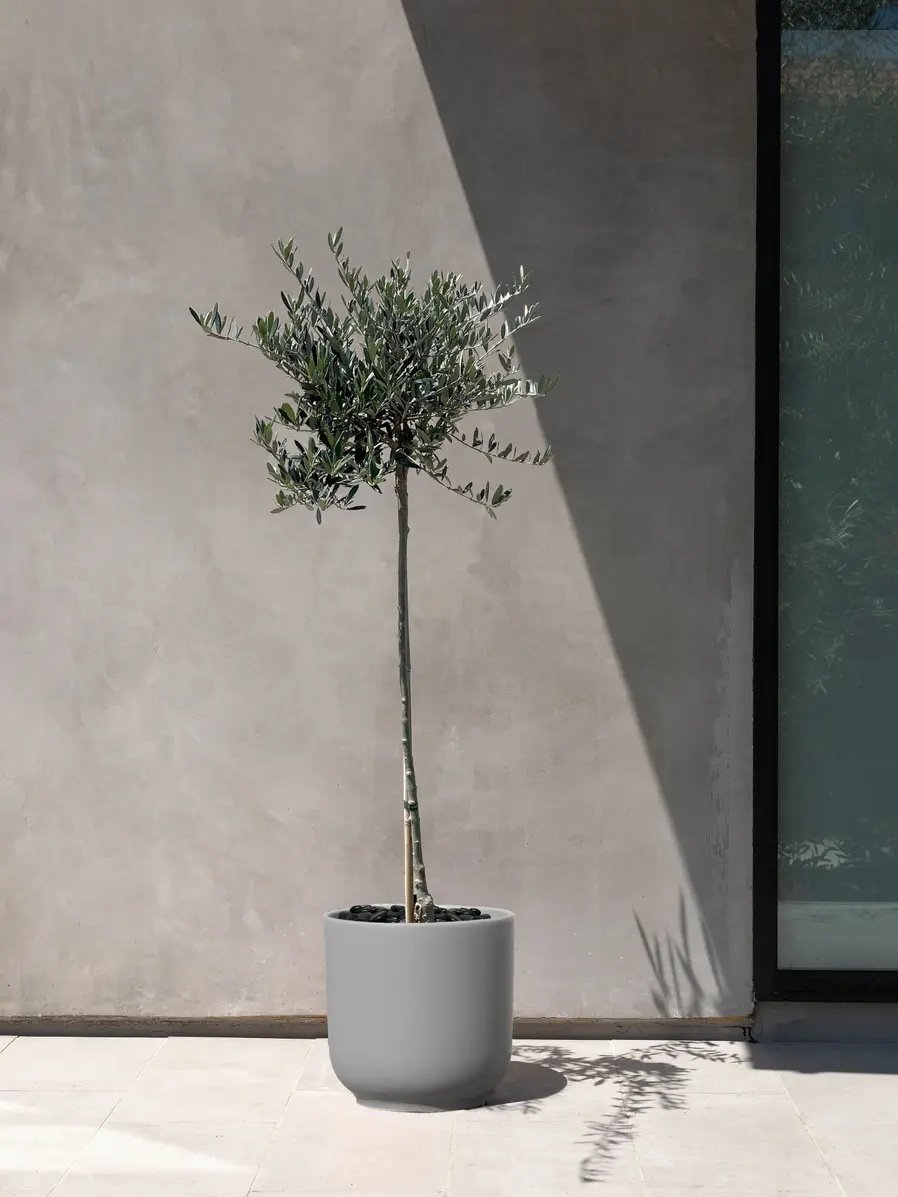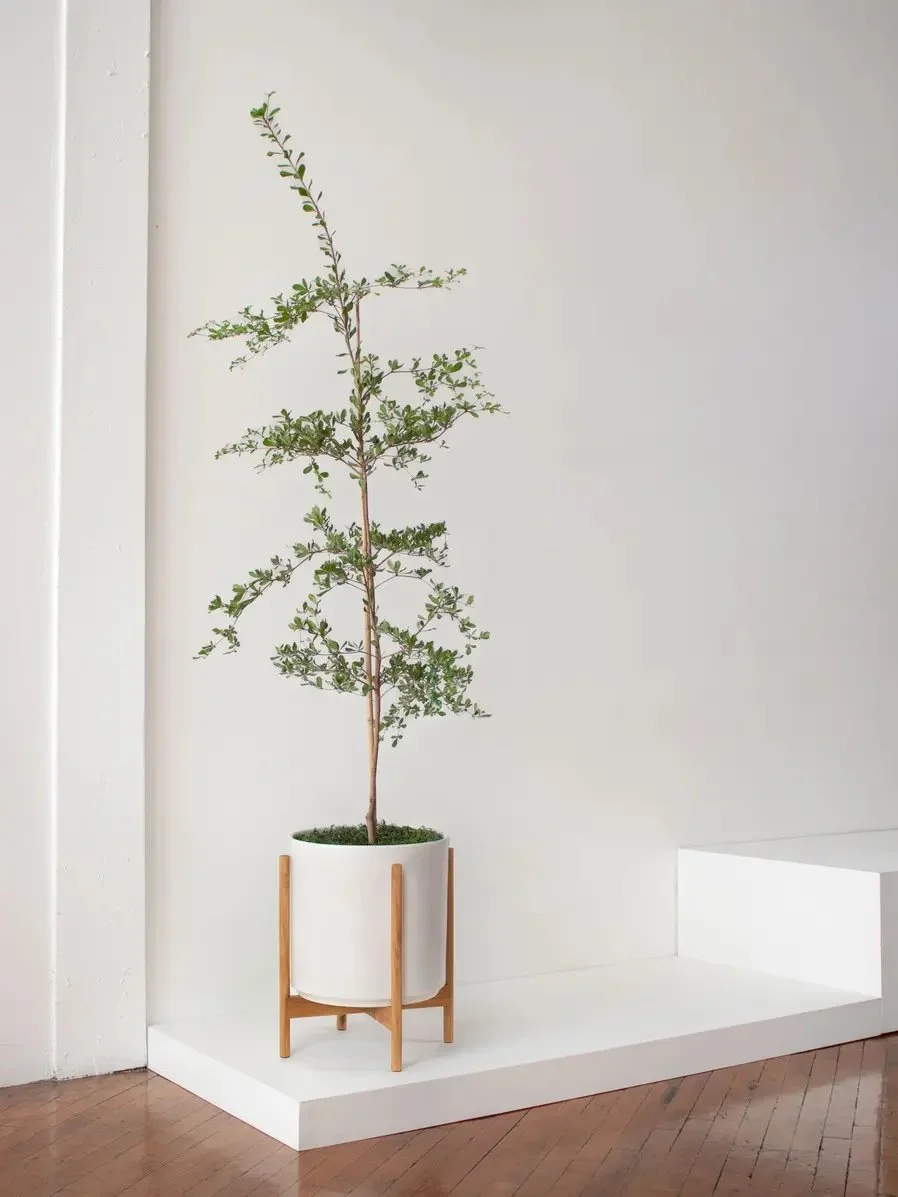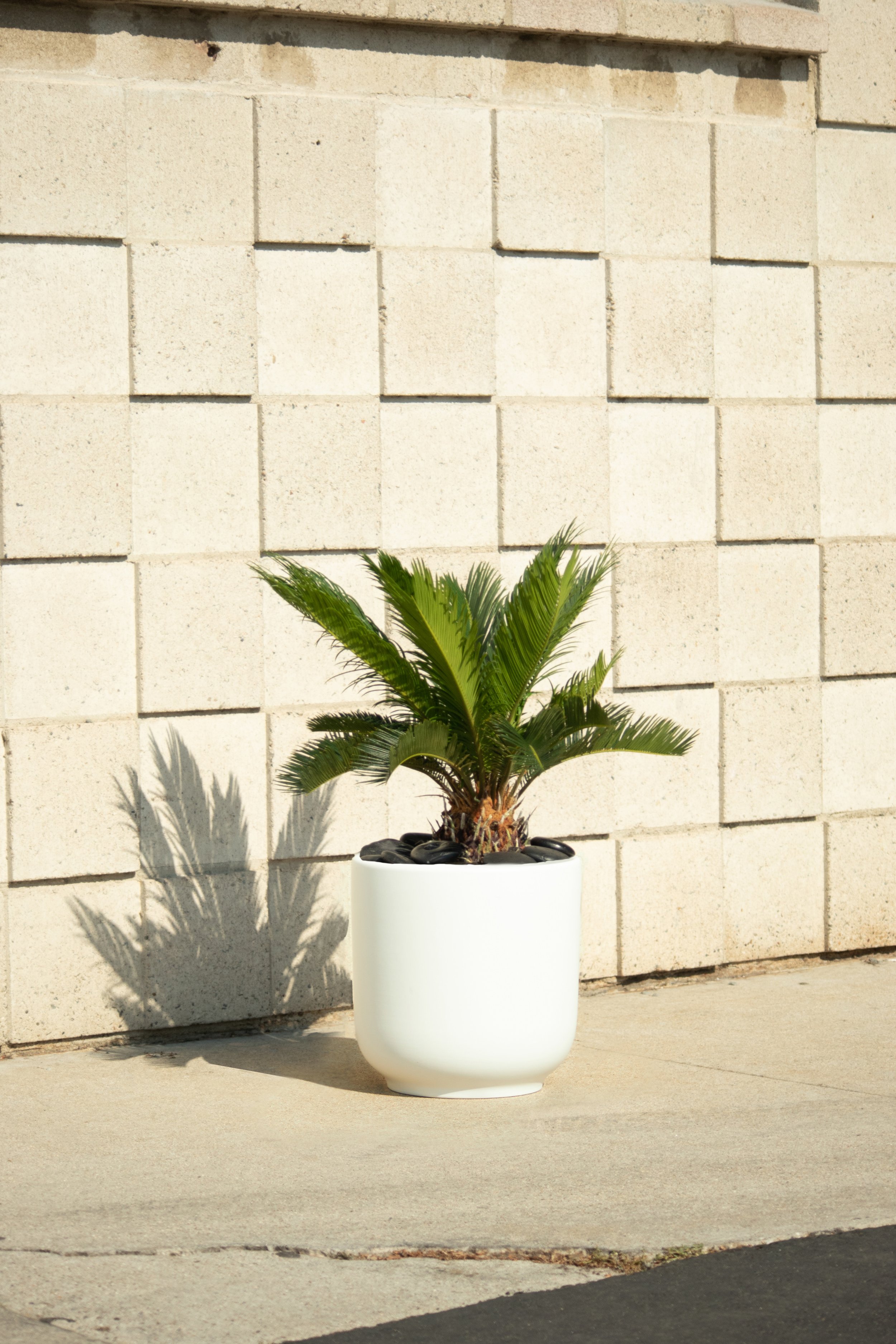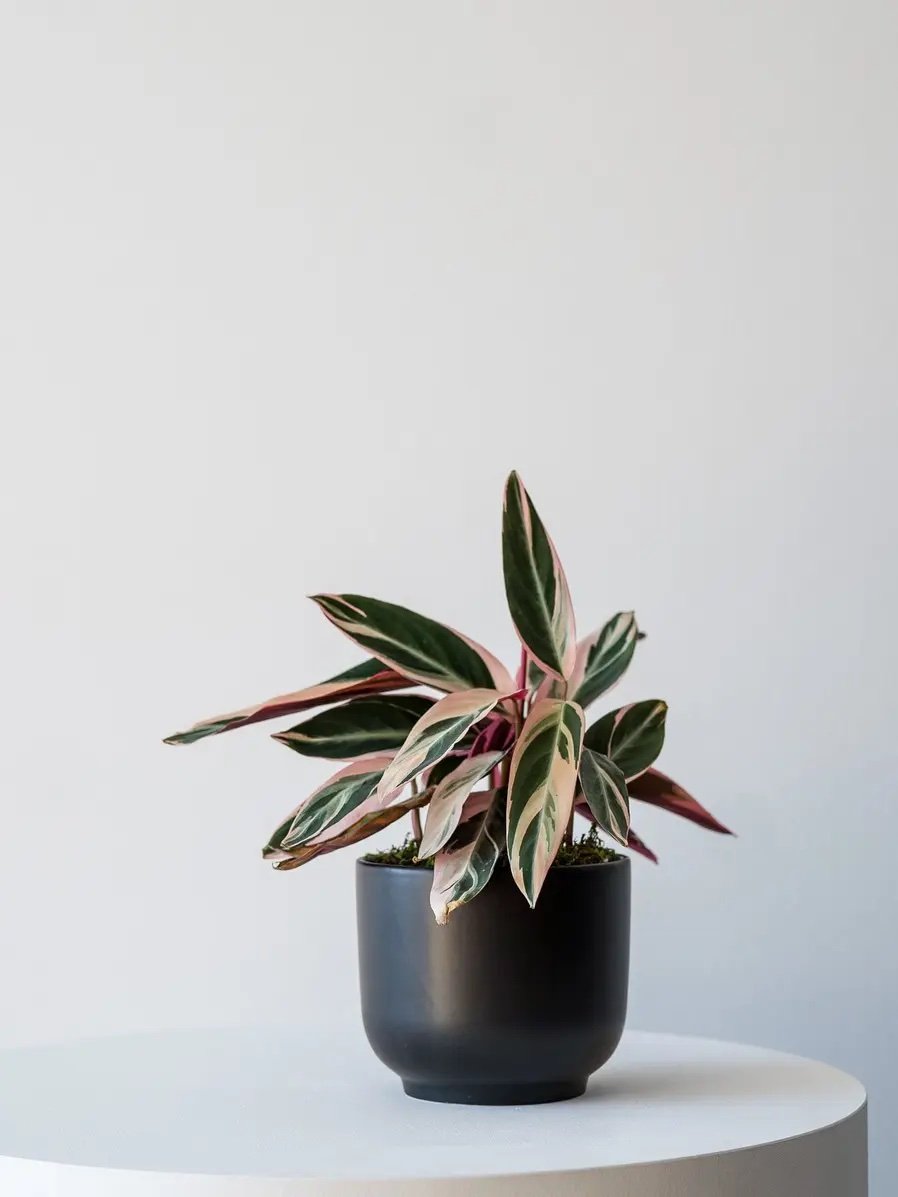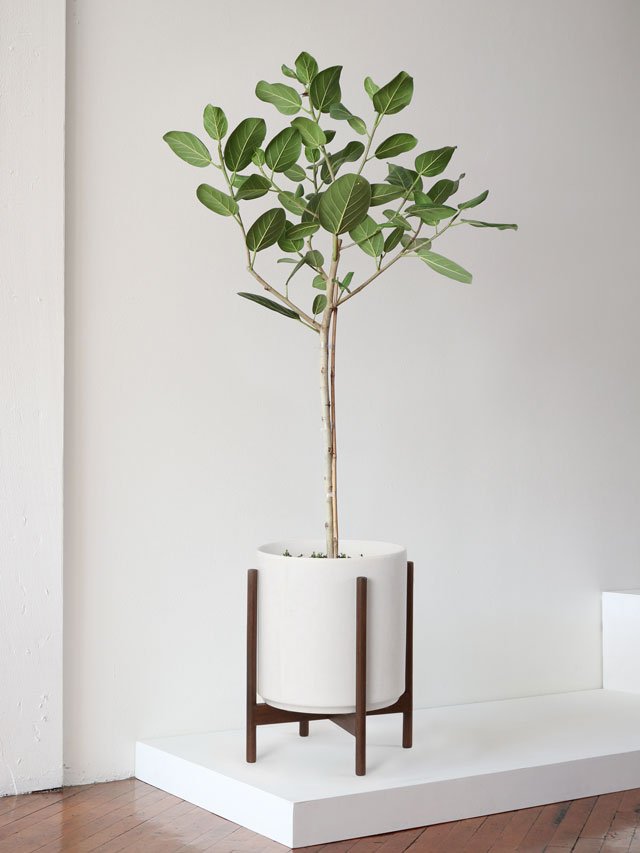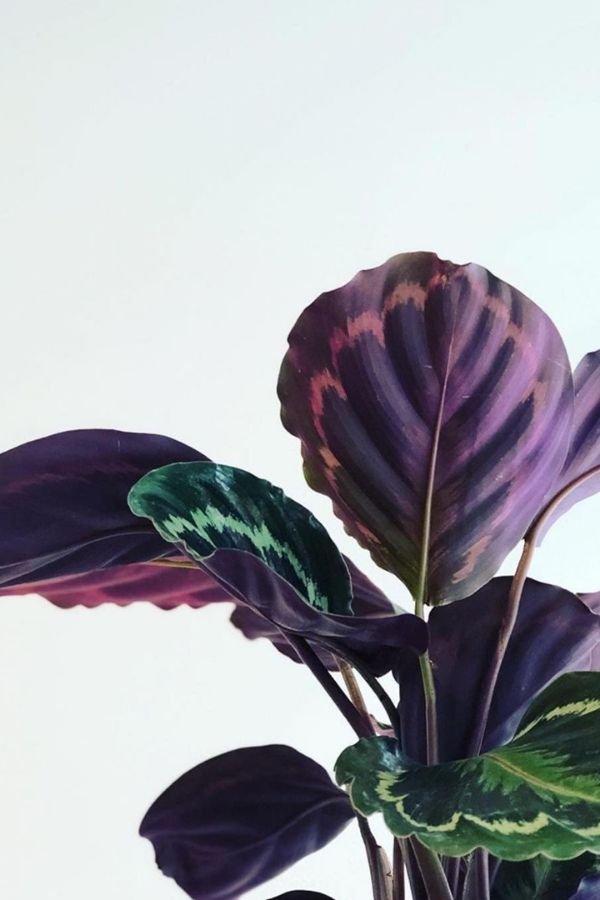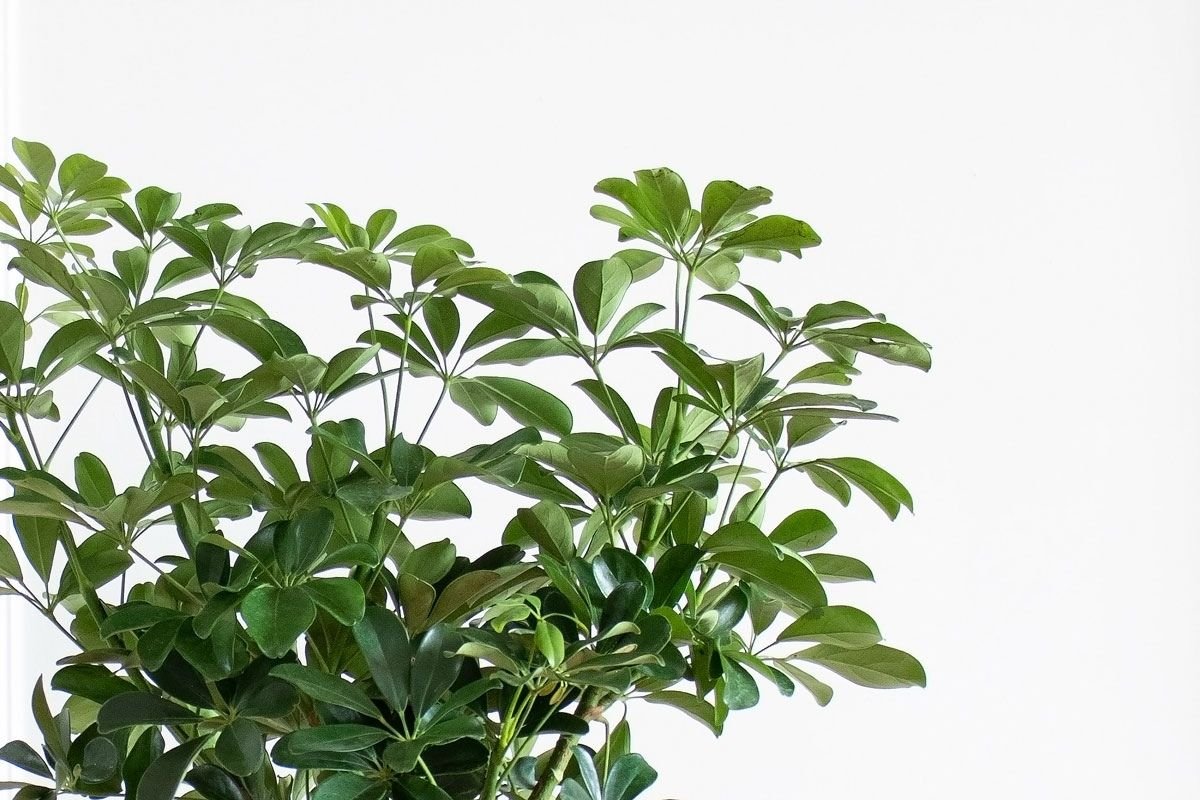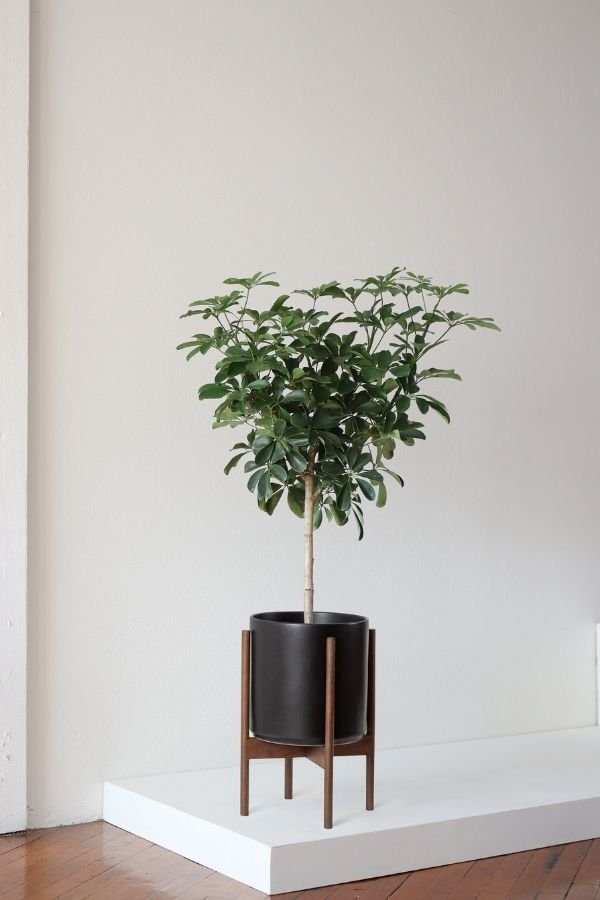Looking for a perfectly potted olive tree? Shop a variety of shapes and sizes at the Léon & George Olive Tree Collection.
So, you’ve got your heart set on an Olive Tree- but now the tricky business begins! Deciding on which variety of statement tree to buy is only half the battle, and what follows can feel like a daunting pursuit. You know that you love the aesthetic of the Olive Tree, but what other considerations need to be taken to account? There are a few! But the good news is, educating yourself on what you need to know before you buy an Olive Tree, and how to care for it once you bring it home, are both simple. We’ve compiled a comprehensive list of everything you need to know before you buy an Olive Tree. So read up, and prepare yourself for green, glowing success!
Your Olive Tree Will Do Best With Ample, Direct Sun
Olive Trees are firm on this stance: they require ample, direct sunlight in order to thrive. This means that you need to ensure that the space you plan on placing your Olive Tree in receives at least six hours of sunlight a day. If this seems a little confusing, we have provided an illustrated tutorial on lighting requirements in our light guide. It’s an easy read, and a great, simple resource!
MEET THE OLIVE TREE’S INDOOR COUSIN, THE SHADY LADY AKA BLACK OLIVE TREE
If you had your heart set on an Olive Tree, but don’t have the light or outdoor space to keep one, there’s an option for you! Look no further than the Black Olive Tree, also known as Bucida Buceras or Shady Lady, the cousin of the Olive Tree with a similar look and suitable for indoors, requiring only 2-3 hours of direct sunlight a day. The difference between Olive Trees and Black Olive Trees may be subtle, but they’re important ones when making a decision on which is right for you!
WHERE TO PLACE YOUR OLIVE TREE
Plan on placing your Olive Tree in the sunniest spot possible, whether that means a sun-drenched area of your porch and patio, or an indoor spot next to a window that receives plenty of direct light from the south or west. Keep in mind that olive Trees are not ideal houseplants as they require a lot of direct sunlight. Expect that your Olive Tree will grow more slowly or quickly in accordance to the amount of light that it receives. While Olive Trees can go indoors in areas that receive sufficient light, it’s generally best to place them outdoors to ensure they get the minimum six hours of sunlight they need per day.
Olive Trees Are Fruiting Trees: But With A Catch
Olive Trees can, of course, produce fruit! But you should note that indoor Olive Trees are highly unlikely to receive the amount of sunshine necessary to produce fruit. This can be a good thing: Olive Tree fruit can drop, which can result in a mess if you don’t stay on top of it. It’s likely that if you are buying an Olive Tree for indoor placement, fruit is not your goal. But if it is: note that you will likely need to place your Olive Tree outside, and that fruit takes time. It can take several months to years of good health and direct sunlight to inspire your Olive Tree to produce fruit. Read our full guide on why your Olive Tree is not producing fruit.
The Olive Tree makes a beautiful plant for patios, decks or other outdoor spaces.
Your Olive Tree Will Need Regular Watering
Olive Trees are a drought-resistant plant, but it’s not a feature that we would encourage you to test. Olive Trees that are watered appropriately will maintain the best health and the most beautiful aesthetic. Once you have decided to buy your Olive Tree and welcome it home, plan on checking the moisture of its topsoil (the top two inches of soil) weekly. When the topsoil is dry, provide four cups of water. Note that your tree’s soil may dry out faster during the sunniest, hottest months, and more slowly during the cooler months. Your watering schedule may need to be adjusted accordingly.
But Not Too Much Water!
Although it can be tempting to pamper your tree whenever the whim strikes you, it’s very important that your love language does not involve overwatering your Olive Tree. Olive Trees are native to arid climates and are not accustomed to receiving large amounts of water regularly. Because most ornamental Olive Trees are placed in pots that do not contain ceramic drainage holes, there is also a risk of creating a pool of standing water below your Olive Tree. This can result in root rot, which can be a difficult issue to overcome once it has set in. Classic signs of an overwatered Olive Tree include yellow, discolored leaves, leaf fall, and a consistently wet trunk. Additionally, if your Olive Tree’s leaves appear curly, withered, or are presenting in unusual shapes, these are signs that the Olive Tree may be suffering from overwatering.
Olive Trees Appreciate Being Fed: A Fertilizer 101
Olive Trees will grow their best when they are fertilized every two to three weeks during the spring, summer and fall. Fertilizing can sound confusing, but it’s actually really simple. A gentle, natural plant food can be diluted directly into the water you use to quench your Olive Tree. Simply follow the instructions on the fertilizer’s label, and note that Foliar Feed, an extra-gentle mineral and vitamin spray which is misted directly on plants’ leaves and trunks, can be safely applied year round for additional nourishment.
Olive Trees Grow At Their Own Pace
Olive Trees are considered to be a slower-growing tree. This can be a huge benefit in the buying process: what you see is what you get, at least for several months to a couple years. Note that the growth rate of any individual Olive Tree is directly related to the amount of sunlight and water that they receive. A consistently watered (but not overwatered) Olive Tree, placed in a spot that receives generous, direct sunlight, will grow at its swiftest rate, and be in its best health.
Olive Trees Are Naturally Pest Resistant
This is one of the finest practical features of the Olive Tree: they are naturally pest and disease resistant, with super-hard wood that’s both strong and highly resilient. You are unlikely to experience a pest problem with your Olive Tree, regardless of whether it is placed indoors or outside. However, outdoor Olive Trees may experience weeds in their soil, like any other outdoor plant. It probably goes without saying, but you’ll want to deal with those weeds the way you would any other: pull them out, and make sure you remove all of their roots, as well.
How To Select A Healthy, Thriving Olive Tree
When you shop for an Olive Tree, look for a plant that has an even canopy of healthy-looking leaves, and avoid Olive Trees that are showing signs of yellow leaves. Healthy Olive Tree foliage will be silver-green in color, and will not be crispy or dry to the touch. The leaves will not fall off if you shake a branch or pull gently. Additionally, survey the soil of the Olive Tree: any signs of colonizing weeds or pests are indications that you should choose another plant. Weeds, of course, are a common inconvenience for most outdoor plants: but if they are not thoroughly removed, with their roots fully extracted, they can become an ongoing headache.
Get A CALIFORNIAN OLIVE TREE
A Piece of California's Natural Beauty: Cultivate your indoor oasis with a tree known for its robust resilience and aesthetic appeal.
Avoid Purchasing Your Olive Tree From A Garden Center
Buying an Olive Tree is an investment, and you want to make sure that you’re getting your money’s worth. But cutting corners from the beginning by purchasing your Olive Tree for the lowest possible price can come back to bite you in the pocket. Every aspect of your Olive Tree, from its overall beauty and aesthetic to its ability to fruit, is directly determined by the Tree’s health, and the health of your Olive Tree is directly correlated to the care it receives: both once it is in your home, and before you buy it. Buy your Olive Tree from a trusted, high-quality grower that gets the pick of the litter, and remember that the plants offered by garden centers may have an appealing price tag, but no guarantee of pest- free, well-tended health.
Plants at garden stores are frequently given the same water, light and care regardless of their species. This does not bode well for Olive Trees, which cannot be overwatered. When they receive a daily deluge of water from a hose that hits its neighbors, Olive Trees do not benefit from that extra blast of moisture.
When you purchase a towering Olive Tree from a garden center or store, that often necessitates jostling it into your car to get it home. If you use your car’s heater or A.C, the plant is also on the receiving end of that wave of forced air. Environmental stress like this is not good for plants, and when they become stressed, recovery takes time. Plan on buying your Olive Tree from a trusted supplier that does the work of transport for you: they know what they’re doing. The price tag may be a little higher at checkout, but we guarantee that your money and your energy will be saved over time.
Even The Healthiest Olive Trees Can Experience Stress On Occasion
Olive Trees are a low-maintenance tree when they get the care that they need, which typically boils down to plenty of direct sunshine and enough, but not too much, water. But any living plant can experience periods of stress or require occasional adjustments in care. When you buy your new plant from Leon & George, you gain access to our custom Plant Doctor service. What does that mean? Plant Doctor support is a great perk: a team of professional horticulture experts, here when you need them to assess your plant’s condition, provide tips and solutions, and to offer meaningful guidance through your journey. Wondering if there’s a hitch? There’s not! No fees are required, and the service does not expire. Our Plant Doctor care is just one of the ways that we offer day-to-day support to Leon & George plant parents as we green the world together.
Ready to bring your space to life with a gorgeous Olive Tree? Shop our full collection of premium living Olive Trees, delivered to your door.
SHOP THE OLIVE TREE COLLECTION
1 TO 1 VIDEO CALL WITH AN EXPERT
Whatever it is, the way you tell your story online can make all the difference.
Welcome to Léon & George
Immerse yourself in the world of Léon & George, where exceptional spaces are our canvas and exceptional plants our medium. With every leaf and stem, we bring a touch of nature's serenity into your home. Our ethos marries sophistication with sustainability, ensuring that each houseplant not only enhances your decor but also embodies our commitment to the environment.
Quality and service are the roots from which our business grows, driving us to deliver indoor plants that are not just beautiful but nurtured for longevity. As stewards of both style and ecological responsibility, we offer a collection that includes everything from lush ferns and hardy succulents to majestic ficus trees and air-purifying snake plants.
Cultivating Growth Beyond the Pot: In the final flourish of our green symphony, we provide an easy-to-grow range tailored to both budding and experienced gardeners alike. Our variegated species thrive in diverse conditions, from the full sun of a kitchen window to the low-light of an office. We ensure our perennials and annuals are partnered with the perfect planters and potting mix, fostering new growth and enhancing indoor air quality. With our guidance, watering, pruning, and repotting become simple acts that keep your house plants vibrant. Join us and cultivate your very own green-thumb, turning any room into a bloom-filled sanctuary.
